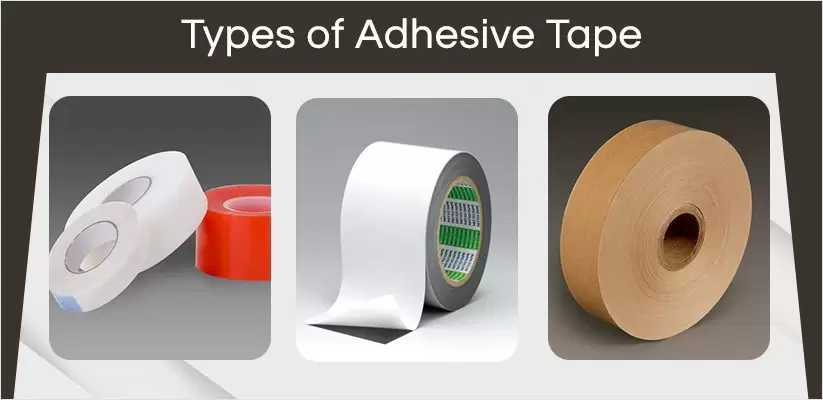What is the Adhesive Tape?
It comes as a mixture of materials and a film that serves the purpose of joining objects together. It is an option that is used in place of screws, welding, and fasteners. The use of the strip in mechanical fasteners is helpful as it can be used in low temperatures and makes the manufacturing process very simple and environmentally friendly.
Post your Requirement
Adhesive tape uses are the best option for automated products as liquid options are more time-consuming and messy. With them, it is required that they are rolled and sprayed to create bonding on the surface.
Related Post: What is a Structural Glazing Tape?
What are They Made of?
They are made of materials like carriers or backing (plastic, paper, foam, foil, cloth, or any other) coated with sticky material as required. The carrier is rolled, which results in a big tape roll. Afterward, it is cut into thin bands with narrow sides that would produce several strip rolls.
Each roll is different and has a unique composition. The rolls can be customized and made to suit the specific application area, thereby giving a range of sticking options.
- The most common options for backing are:
- Paper- these have a paper backing and are called flat backs.
- Felt- non-woven or felt straps are used to scratch on the surface
- Cloth- it is in the heat-resistant strips that extra backing is required, and thus, the material is used.
- Rubber- it is used for self-fusing rubber electrical insulation and sealing strip.
- When used as backing, Foam- Foam provides additional protection and is often used for sealing, mounting, and weather stripping.
- Plastic film- thermoplastics and thermosets are used in the plastic category. It has one or more layers of plastic. It is usually clear, printed, plain, or colored plastic in single or multilayer and is combined with paper or aluminum.
- Glass or fiberglass is a composite material that presents stability even in a harsh environment by enduring rotting, burning, or shrinkage.
- Metal foil- the category resists high temperatures and humidity. It is used for taping joints and seams against vapor or moisture. Aluminum foil is laminated to paper or plastic for added strength and durability. In multilayer printed circuit boards (PCB), copper foil is used.
- Acrylic films- are plastic or thermoplastic resin films used in polymethyl methacrylate or polymethyl- 2 – methyl propanoate. It is UV stable, and this results in the wide usage of the category.
- PET/ Polyester- it is also called Mylar, and plastic is used as backing in film or laminate.
- Polymide films are heat-resistant, silicone-based backings known as Kapton strips and are widely used for their fantastic physical, chemical, and electrical baking over various surfaces.
- PVC/ Vinyl- is used in a vinyl or PVC backing to resist water, weather extremes, and abrasion.
- Filament- it is a strapping made of filament and then woven in yarns. It is strong and versatile and used for odd-shaped materials.
- Transfer tape is a version used on a variety of surfaces and has a thin film with no carrier and for sticking is transferred on dry surfaces. It comes with a release peel. Thus it is useful in handling the strap.
How to Apply Them?
The material used in them is thermally activated, pressure-sensitive, and might need some moisture for the application. There is another type like latex gums that sticks all by them.
Types of Adhesive Tape –
The most used or readily available kind of option is as follows:
- Pressure-sensitive adhesives (PSAs) – They can be easily stuck with the help of a hand or finger and are extremely dirty and sticky at normal temperatures. They can bond plastic, paper, glass, wood, metal, and cement. It does not need solvent, heat, or water to bond the surfaces. However, there is a requirement for adequate moderate temperature as lower temperatures may result in inadequate wetting. If applied at a more concentrative temperature, it might result in a stretch; thereby, the desired results are not attained. It is the common adhesive tape for plastic.
- Heat-activated tape – It is dry tack-free tape unless there is an introduction of heat. It works at high temperatures like 180 degrees F or even high to form a bonding. It works perfectly for tricky surfaces like EPDM, rubber, PVC, and PU-based plastic materials. They have versatile use and are often faced in the industrial sector.
- Water-activated tape – The category is popularly known as gummed paper. It is an animal-based or starch-based glue that becomes fit to bind only after the introduction of moisture. It is the most inexpensive option and is usually used in envelopes.
- Non-adhesive tapes, laminates, or films – These come in the self-adhering category and don’t have any additional applied binding agent on them. PTFE is the standard type of tape in this category.
Where to Buy Adhesive Tape?
Before purchasing the best option, make sure that it is as per your exact requirement. The product chosen will help you stick to the desired surface, and thus, you cannot go wrong with it. The market is full of the same; therefore, before selecting the one that suits you consider the following:
- Use: Choose a type that suits your requirement. The different types are for other surfaces to stick; thus, choose your requirement and temperatures. There are options available even for multipurpose, and thus, depending on your preference, select one.
- Price: This is crucial as it is a highly used product, and you will need it many times for sticking requirements, thus, select an option that doesn’t pinch your pocket and proves to be economically viable.
- Quality: The material used to make it should be of great quality and provide excellent sticking options that last long.
At McCoyMart, there are the best options available from multiple brands of multiple types; thus, pick up the best-suited option for you.























Post A Comment